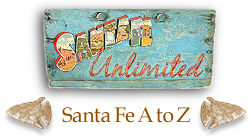|
|||
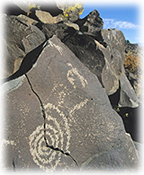 Paseo PaseoDefinition: “A plaza or walkway for strolling; a leisurely walk or stroll, especially one taken in the evening.” Many major street names in Northern New Mexican towns include the word paseo. (~Jean) Petroglyph Definition: “A rock carving, especially a prehistoric one.” Petroglyphs and pictographs are the oldest and most widespread forms of creative and cultural expression in the Native American Southwest. Petroglyphs are carved into the rock, while pictographs are painted designs. These visual inscriptions can be found in abundance throughout Northern New Mexico on mesas, rock walls, caves, cliff dwellings, etc. Petroglyphs, which are more common than pictographs, are found on the dark, exposed surfaces of rock such as sandstone and basalt. These surfaces serve as the base color for abstract and realistic human, anthropomorphic, supernatural, animal and plant figures, as well as designs such as spirals, circles and stars. The three major Southwestern Indian groups who created rock art were: the Hohokam of Southern Arizona; the Mogollon of Southern Arizona, New Mexico and West Texas; and the Anasazi (now known as the Pueblo Indians) of Southern Utah, Northern New Mexico and Arizona. They existed from approximately AD 1 to 1500. The Navajos and Apaches began their rock-art traditions at a later time. It is ceremonial in nature and is located in Northwestern New Mexico, Northern Arizona and Southern Utah. (~Jean) 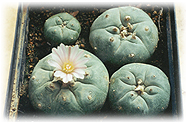 Peyote PeyoteA wooly Mexican spineless cactus, which can be found in central Mexico and throughout the American Southwest. The above ground plant is made up of a circle of "buttons," which have a high concentration of mescaline. Because of its hallucinogenic properties, peyote has played a major sacramental role among the Huichol and other Indians of Mexico for approximately 2,000 years, while its use has spread to the North American tribes in the last hundred years. During the 1960s and 1970s, numerous books written by Carlos Casteneda expanded the use of peyote to American youth. (~Aimee) Picante Sauce Definition (Picante): “Spicy; in Spanish, literally pricking, biting, or stinging.” Picante sauce is a term coined by condiment maker, David Pace, for his own version of salsa. Picante sauce is usually a little more pureed than bottled salsa, but is chunkier than fresh red salsa. (~Jean) Pictograph 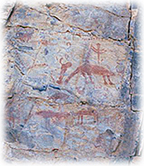 Definition: “A painted pictorial symbol for a word or phrase; pictographs were used as the earliest known form of writing.” Pictographs and petroglyphs are the oldest and most widespread forms of creative and cultural expression in the Native American Southwest. Pictographs are painted designs, while petroglyphs are carved into the rock. In prehistoric Utah, Arizona, New Mexico, Texas, and Colorado, hunter-gatherer Indians began to decorate canyon walls, rock shelters and boulders with rock art. These visual inscriptions can be found in abundance throughout Northern New Mexico on mesas, rock walls, caves, cliff dwellings, etc. Pictographs are usually found on light-colored, protected surfaces. Stylized animals and humans and geometric objects are common subjects. Pictograph pigments were made from soot or powdered local minerals. Brushes were probably made from the tips of yucca leaves. The three major Southwestern Indian groups who created rock art were: the Hohokam of Southern Arizona; the Mogollon of Southern Arizona, New Mexico and West Texas; and the Anasazi (now known as the Pueblo Indians) of Southern Utah, Northern New Mexico and Arizona. They existed from approximately AD 1 to 1500. The Navajos and Apaches began their rock-art traditions at a later time. It is ceremonial in nature and is located in Northwestern New Mexico, Northern Arizona and Southern Utah. (~Jean) Definition: “A painted pictorial symbol for a word or phrase; pictographs were used as the earliest known form of writing.” Pictographs and petroglyphs are the oldest and most widespread forms of creative and cultural expression in the Native American Southwest. Pictographs are painted designs, while petroglyphs are carved into the rock. In prehistoric Utah, Arizona, New Mexico, Texas, and Colorado, hunter-gatherer Indians began to decorate canyon walls, rock shelters and boulders with rock art. These visual inscriptions can be found in abundance throughout Northern New Mexico on mesas, rock walls, caves, cliff dwellings, etc. Pictographs are usually found on light-colored, protected surfaces. Stylized animals and humans and geometric objects are common subjects. Pictograph pigments were made from soot or powdered local minerals. Brushes were probably made from the tips of yucca leaves. The three major Southwestern Indian groups who created rock art were: the Hohokam of Southern Arizona; the Mogollon of Southern Arizona, New Mexico and West Texas; and the Anasazi (now known as the Pueblo Indians) of Southern Utah, Northern New Mexico and Arizona. They existed from approximately AD 1 to 1500. The Navajos and Apaches began their rock-art traditions at a later time. It is ceremonial in nature and is located in Northwestern New Mexico, Northern Arizona and Southern Utah. (~Jean)Picuris Pueblo Located 15 miles from Embudo on State Road 73, Picuris Pueblo is the smallest and most remote of the Northern New Mexico pueblos. Nestled in a wooded valley of the Sangre de Christo Mountains, the Pueblo is home to several hundred natives. A restored adobe church is the centerpiece of the Pueblo, and the modern-day aspects of the Pueblo include Hotel Santa Fe, a restaurant, a museum, and a gift shop, all open to visitors. (~Jean) See more about the Eight Northern New Mexico Indian Pueblos Piñon A slow growing member of the pine family which yields an edible nut. Piñon (or pine) nuts were a staple among Indians of the Southwest, and are still prized today. The slow burning wood of the piñon is highly regarded for its scent, which is unmistakable in the air of Santa Fe and Taos as autumn turns to winter. (~Aimee) Pojoaque Pueblo 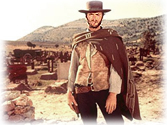 Located 15 miles north of Santa Fe on US 84/285, the Pojoaque Pueblo is probably the most visibly developed Pueblo in the Northern New Mexico area. Its shopping center, bank, tribal buildings, Cities of Gold Casino and Hotel, and the Towa Golf Course run right along the highway. After being decimated by smallpox 100 years ago, the Pueblo was abandoned and not inhabited again until 1915. The piñon-covered foothills of the Sangre de Christo Mountains offer a still-tranquil setting for this upwardly-mobile, 21st-century Pueblo, which is careful to maintain a balance between the ancient past and the far-reaching future. Many Hispanics and Anglos live in the neighboring areas and are warmly welcomed to shop and do business on the Pueblo. (~Jean) Located 15 miles north of Santa Fe on US 84/285, the Pojoaque Pueblo is probably the most visibly developed Pueblo in the Northern New Mexico area. Its shopping center, bank, tribal buildings, Cities of Gold Casino and Hotel, and the Towa Golf Course run right along the highway. After being decimated by smallpox 100 years ago, the Pueblo was abandoned and not inhabited again until 1915. The piñon-covered foothills of the Sangre de Christo Mountains offer a still-tranquil setting for this upwardly-mobile, 21st-century Pueblo, which is careful to maintain a balance between the ancient past and the far-reaching future. Many Hispanics and Anglos live in the neighboring areas and are warmly welcomed to shop and do business on the Pueblo. (~Jean)See more about the Eight Northern New Mexico Indian Pueblos Poncho An outer garment of a type originally worn in South America, Mexico, and by Indians of the Southwest. It is made of a thick piece of woolen cloth with a slit in the middle for the head. The poncho became very popular among 1960s hippies, and can be found in use just about anywhere in the U.S. today. (~Aimee) 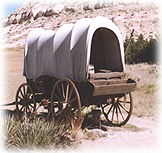 Prairie Schooner (or Covered Wagon) Prairie Schooner (or Covered Wagon)A large wagon (in the style of a Conestoga wagon, but much lighter) fitted with thin, supple hoops made of wood, and covered with a canvas "bonnet" to protect settlers and their belongings from wind and dust. These were almost universally used in the migration across the western plains. These lighter wagons could be drawn by four horses or oxen rather than the six it took to pull the heavier Conestoga. In crossing the Great Plains, groups of prairie schooners customarily traveled together for protection. Traveling in this fashion was known as a "wagon train." (~Aimee) Pictured top to bottom: 1} Petroglyph in a rock outside Santa Fe, New Mexico; 2} Peyote plants; 3} Pictograph found in Northern New Mexico; 4} Mexican style poncho on actor, Clint Eastwood; 5} Prairie Schooner in the desert |
|||
Home | Food | Lodging | Merchants | Services | Real Estate | Art & Galleries | Entertainment | Recreation Ski Areas | Mind-Body-Spirit | Santa Fe Information | Local Color | Canyon Road | The Turquoise Trail | Santa Fe Plaza The Pueblos | Scenic Beauty | Day Trips | Chili | Special Events | Santa Fe History | Multicultures | Museums High Road to Taos | The Wild West | Churches | Plants & Wildlife | Santa Fe Railyard | Turquoise | Architecture Fiesta | Indian Market | Spanish Market | Zozobra | Features | About Us | Get Listed! | Santa Fe Unlimited Trading Post Photo of the Week | Link of the Month | Testimonials | Santa Fe Webcams | Santa Fe Weather Santa Fe A to Z | Movie Locations | Santa Fe Unlimited Guestbook | Sitemap | Contact Us | Taos Unlimited All original graphics and content of this website, unless otherwise indicated, are copyright © 2006-2011 Santa Fe Unlimited and may not be reproduced in any fashion. |
|||

